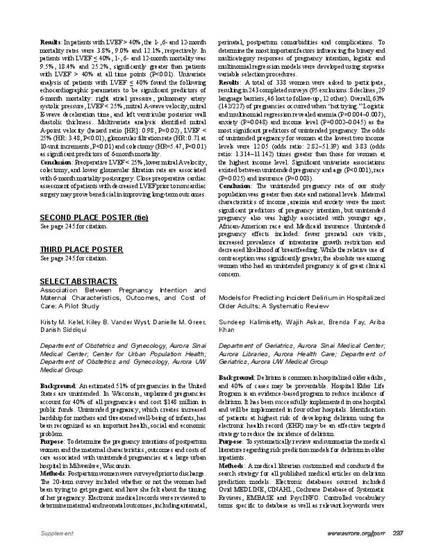
- delirium,
- hospitalization,
- risk factors
Background: Delirium is common in hospitalized older adults, and 40% of cases may be preventable. Hospital Elder Life Program is an evidence-based program to reduce incidence of delirium. It has been successfully implemented in one hospital and will be implemented in four other hospitals. Identification of patients at highest risk of developing delirium using the electronic health record (EHR) may be an effective targeted strategy to reduce the incidence of delirium.
Purpose: To systematically review and summarize the medical literature regarding risk prediction models for delirium in older inpatients.
Methods: A medical librarian customized and conducted the search strategy for all published medical articles on delirium prediction models. Electronic databases sourced included Ovid MEDLINE, CINAHL, Cochrane Database of Systematic Reviews, EMBASE and PsycINFO. Controlled vocabulary terms specific to database as well as relevant keywords were used, including variants of delirium, altered mental status, acute confusional state, acute brain syndrome, acute brain failure, metabolic encephalopathy, predict, predictive, prediction, models, modeling, scores, scoring, tests, testing, rules, index and indices. The bibliographies of included studies were examined, and no additional articles were referenced.
Results: To appropriately extract data from the 12 studies meeting inclusion criteria, the following parameters were used: study description, study population, delirium assessment method, incidence of delirium, and risk factors for delirium. Quality for cohort studies was assessed using Newcastle-Ottawa Quality Assessment Scale ranging from 1 to 9 (1 = poor quality, 9 = high quality). Overall incidence of delirium in the studies ranged from 4% to 26%. Most common risk factors for delirium were dementia, decreased functional status, blood urea nitrogen to creatinine ratio, infection and severe illness. Other variables less common were alcohol, malignancy, history of delirium, older age, medications, physical restraints, malnutrition, admitted from other than home and an iatrogenic event. The quality of studies ranged from 4 to 8.
Conclusion: This systematic review summarizes the medical literature on risk prediction models for delirium in hospitalized older patients. We will use this information to develop an EHR-generated delirium risk prediction model to be used by the Hospital Elder Life Program to reduce delirium incidence.
Kalimisetty S, Askar W, Fay B, Khan A. Models for predicting incident delirium in hospitalized older adults: a systematic review. J Patient Cent Res Rev. 2016;3:237-8.
